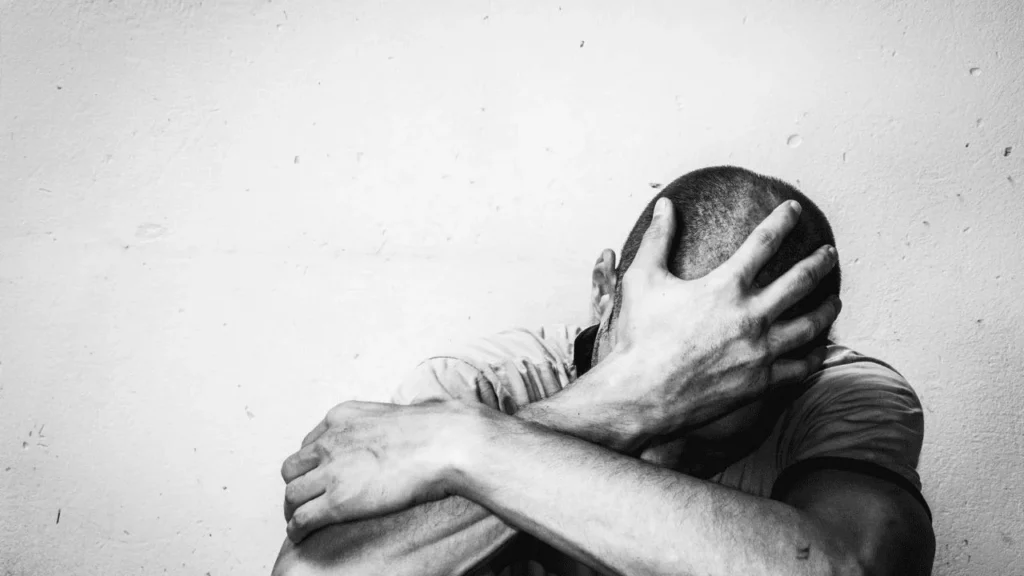Why do addicts go back?
It’s a question non-addicts often ask. They wonder why people return to something they know is hurting them — drugs, gambling, food, or porn.
It’s simply because most people misunderstand how addiction works.
To many, addiction seems like a problem of willpower — a matter of bad choices that stuck and can be dropped with enough determination.
But that’s not what it is at all. Granted, it often begins as a bad choice. But then something deeper happens — a pattern forms, a trap develops, and the brain is reconfigured to think, feel, and behave differently.
Our focus here is porn addiction, though most addictions follow the same pathway. To truly grasp porn addiction, we need to understand its core attributes — the telltale signs that show you’re hooked.
A simple sign that you’re addicted is when you start using porn to cope with stress, anxiety, or boredom — and it begins to interfere with your daily life.
But there are deeper, more defining signs.

1. Craving: The Strong, Uncontrollable Urge
At the heart of every addiction lies craving.
It’s that intense, almost unbearable desire — your heart races, your stress spikes, and it feels like you must relieve the pressure. Craving is that powerful pull that drags you back, even after countless promises to quit.
That’s your sensitized addiction pathway screaming.
Sensitization means your brain has become attuned to intense pleasure — it remembers and seeks out whatever gave it that high.
Here’s the simple truth:
Sex is an evolutionary reward act. It ensures procreation, but it’s also deeply pleasurable. Anything that leads to sex or mimics it becomes inherently rewarding.
Porn, however, adds a twist — endless variety. Every time you watch porn, your brain releases dopamine, the chemical of anticipation and pursuit. It’s the molecule behind that saying, “the fun is in the doing.”
The more you watch, the more dopamine builds up. Over time, your brain forms new neural pathways that trigger cravings — often just from the memory of the pleasure.
It’s as if your brain has been fingerprinted. Every time you’re in a situation similar to when you first used porn, those same pleasure circuits light up. Your body joins in — it feels like you need porn and masturbation to feel complete.
2. Loss of Control: When “Just One More Time” Never Ends
The second attribute is the loss of control.
Most people begin with confidence: “I can stop anytime I want.” But that illusion fades fast.
After the third or fourth use, control begins to slip. Porn becomes tied to your emotions — stress, sadness, loneliness, or disappointment.
You plan to spend 10 minutes watching, maybe one or two clips. Two hours later, you’ve gone through 15 short videos and can’t stop.
What’s happening isn’t weakness — it’s your brain’s reward system overriding logic.
3. Tolerance: When Pleasure Starts Fading
In addiction, two forces battle within your brain — sensitization and desensitization.
- Sensitization makes you crave the high again.
- Desensitization dulls your ability to feel that same pleasure.
The more you use porn, the less satisfying it becomes. That’s tolerance.
Your brain, trying to maintain balance, releases a chemical called CREB, which dampens the pleasure response. Ironically, this only worsens the problem. You stop feeling the thrill, but the craving remains — forcing you to consume more, for less reward.
It’s a vicious cycle. You chase a pleasure that no longer exists.
4. Withdrawal: When the Body Starts to Complain
Addiction isn’t just mental — it’s physical too.
When you try to quit, your body rebels.
Common withdrawal symptoms include irritability, fatigue, depression, sleeplessness, lack of focus, trembling, and anxiety. You might feel restless, hopeless, or even physically ill.
Your brain has become so dependent on the addictive stimulus that it can’t function normally without it. It’s not craving because it’s good for you — it’s craving because it’s familiar. It wants relief, not healing.
5. Neglect of Other Activities: When One Thing Rules Everything
At this stage, the addiction takes over.
Things that once brought joy — hobbies, relationships, work, and goals — fade into the background.
Porn doesn’t just numb stress; it numbs joy. After the act, dopamine levels drop, leaving you unmotivated and emotionally flat.
You start living for the addiction. You think about it when you wake up, do it during the day, and feel guilty about it at night.
It consumes your time, attention, and eventually your sense of self.
This is why addiction destroys more than health — it shatters relationships, productivity, and emotional stability.
6. Denial: “I Don’t Have a Problem”
Denial is addiction’s most effective defense.
It takes many forms — “I’m fine,” “I can stop anytime,” “Everyone does it,” or even “It’s healthy for the prostate.”
But denial blinds you to reality. Without awareness, there can be no recovery.
Most people don’t seek help until the damage becomes visible. Yet addiction begins long before the signs appear.
Recognizing denial is the first step toward healing.
7. Compulsion: Doing It Without Thinking
Addiction eventually turns voluntary behavior into automatic action.
You reach for your phone or laptop and open that website — almost unconsciously. Before logic kicks in, you’ve already gone through five clips and climaxed.
That’s compulsion — your brain on autopilot.
It feels like your mind has split in two: one part saying “stop,” the other already doing it.
Compulsion makes addiction feel uncontrollable because the habit has become deeply wired into your brain’s circuitry.
Porn addiction changes your brain, body, and behavior.
That’s why recovery isn’t just about stopping — it’s about retraining your brain, rebalancing your body, and reclaiming control.
It’s not easy — I can tell you from experience. But once you understand these attributes, you’ve already taken the first step toward rewiring your brain.



